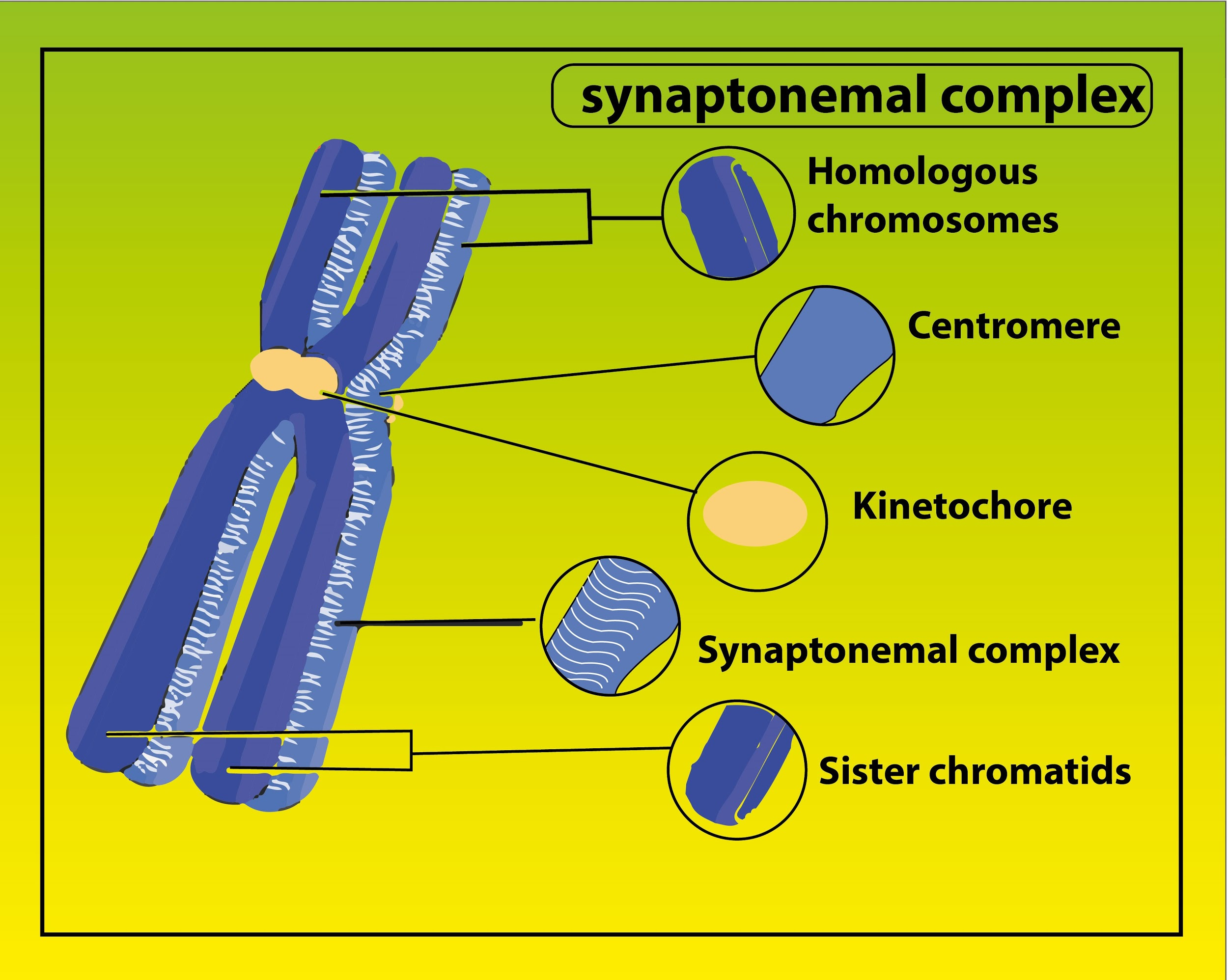Answer
396.9k+ views
Hint: During Meiosis-I of cell division, homologous chromosomes pair and take part in a process known as crossing over. The process of homologous chromosomes pairing is known as synapsis and crossing over leads to genetic variations in the offsprings.
Complete answer:
Synaptic force is the force that develops between the homologous chromosomes during the zygotene stage. In this stage, the homologous chromosomes pair together with the help of specialized proteins known as synaptonemal proteins that help stabilize the chromosomes and promote crossing over. This process is known as synapsis which is followed by crossing over in the pachytene stage. This crossing over leads to new genetic combinations which alter the phenotype of the offsprings as well. Such variations, in the long run, lead to the evolution of organisms.
Additional Information: The prophase I of Meiosis I is further divided into 5 stages as there are a lot of events taking place in it.
Leptotene: It is the first stage of prophase I and the process of condensation of chromosomes begin in it. Homologous chromosomes start pairing with each other.
Zygotene: It is the second stage of prophase-I in which synapsis takes place with the formation of the synaptonemal complex. The paired chromosomes are known as bivalents or tetrads.
Pachytene: It is the third stage in which recombination of the genetic material takes place due to the crossing over of non-sister chromatids of homologous chromosomes.
Diplotene: It is the fourth stage in which crossing over gets fully completed. But there are still visible junctions between the chromosomes where crossing over took place known as chiasmata.
DIakinesis: It is the fifth stage in which the full chromosome condensation occurs and the chromosomes move towards the equator for the next stage of meiosis-I known as metaphase-I.
So, the correct option is ‘Synaptic force’.
Note: -Meiosis is known as reductional division as chromosomes number becomes half after it occurs. It takes place when there is a gamete formation.
-The term zygotene means paired threads because in this stage the pair homologous chromosomes look like paired threads.
-The zygotene stage is also known as the bouquet stage because all the telomeres of chromosomes cluster at one end of the nucleus.

Complete answer:
Synaptic force is the force that develops between the homologous chromosomes during the zygotene stage. In this stage, the homologous chromosomes pair together with the help of specialized proteins known as synaptonemal proteins that help stabilize the chromosomes and promote crossing over. This process is known as synapsis which is followed by crossing over in the pachytene stage. This crossing over leads to new genetic combinations which alter the phenotype of the offsprings as well. Such variations, in the long run, lead to the evolution of organisms.
Additional Information: The prophase I of Meiosis I is further divided into 5 stages as there are a lot of events taking place in it.
Leptotene: It is the first stage of prophase I and the process of condensation of chromosomes begin in it. Homologous chromosomes start pairing with each other.
Zygotene: It is the second stage of prophase-I in which synapsis takes place with the formation of the synaptonemal complex. The paired chromosomes are known as bivalents or tetrads.
Pachytene: It is the third stage in which recombination of the genetic material takes place due to the crossing over of non-sister chromatids of homologous chromosomes.
Diplotene: It is the fourth stage in which crossing over gets fully completed. But there are still visible junctions between the chromosomes where crossing over took place known as chiasmata.
DIakinesis: It is the fifth stage in which the full chromosome condensation occurs and the chromosomes move towards the equator for the next stage of meiosis-I known as metaphase-I.
So, the correct option is ‘Synaptic force’.
Note: -Meiosis is known as reductional division as chromosomes number becomes half after it occurs. It takes place when there is a gamete formation.
-The term zygotene means paired threads because in this stage the pair homologous chromosomes look like paired threads.
-The zygotene stage is also known as the bouquet stage because all the telomeres of chromosomes cluster at one end of the nucleus.

Recently Updated Pages
How many sigma and pi bonds are present in HCequiv class 11 chemistry CBSE

Why Are Noble Gases NonReactive class 11 chemistry CBSE

Let X and Y be the sets of all positive divisors of class 11 maths CBSE

Let x and y be 2 real numbers which satisfy the equations class 11 maths CBSE

Let x 4log 2sqrt 9k 1 + 7 and y dfrac132log 2sqrt5 class 11 maths CBSE

Let x22ax+b20 and x22bx+a20 be two equations Then the class 11 maths CBSE

Trending doubts
Fill the blanks with the suitable prepositions 1 The class 9 english CBSE

At which age domestication of animals started A Neolithic class 11 social science CBSE

Which are the Top 10 Largest Countries of the World?

Give 10 examples for herbs , shrubs , climbers , creepers

Difference between Prokaryotic cell and Eukaryotic class 11 biology CBSE

Difference Between Plant Cell and Animal Cell

Write a letter to the principal requesting him to grant class 10 english CBSE

Change the following sentences into negative and interrogative class 10 english CBSE

Fill in the blanks A 1 lakh ten thousand B 1 million class 9 maths CBSE



